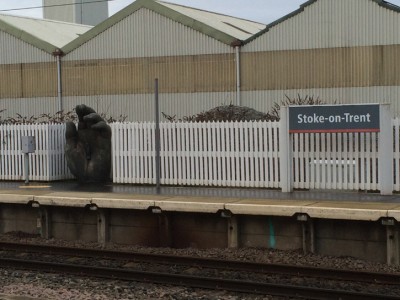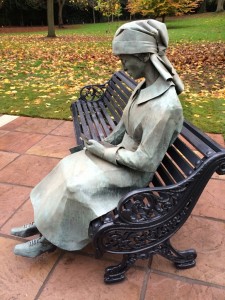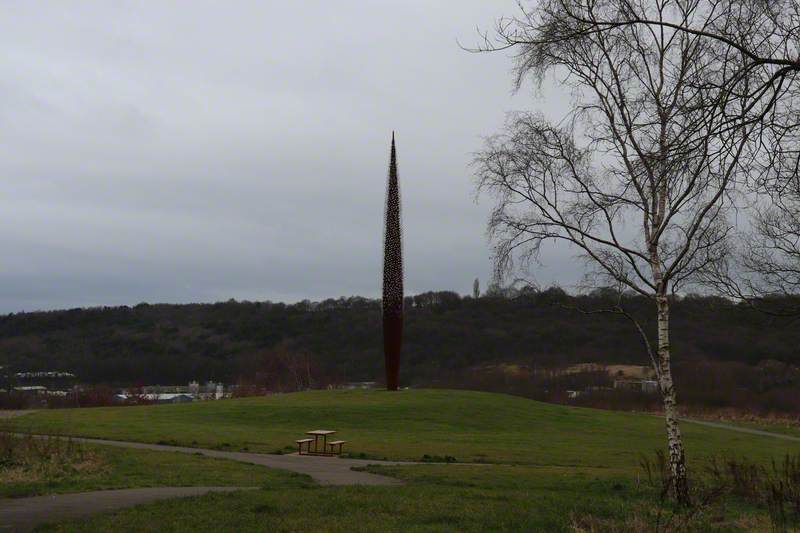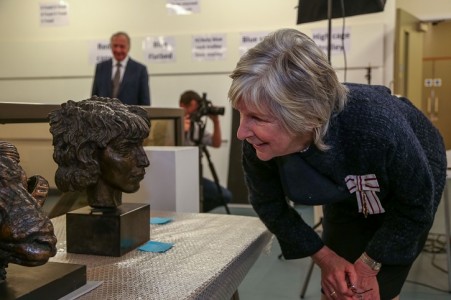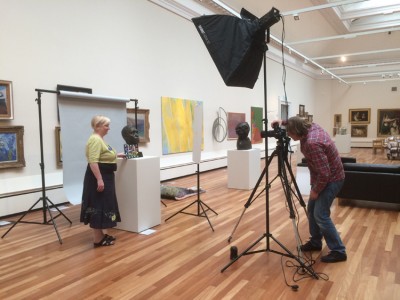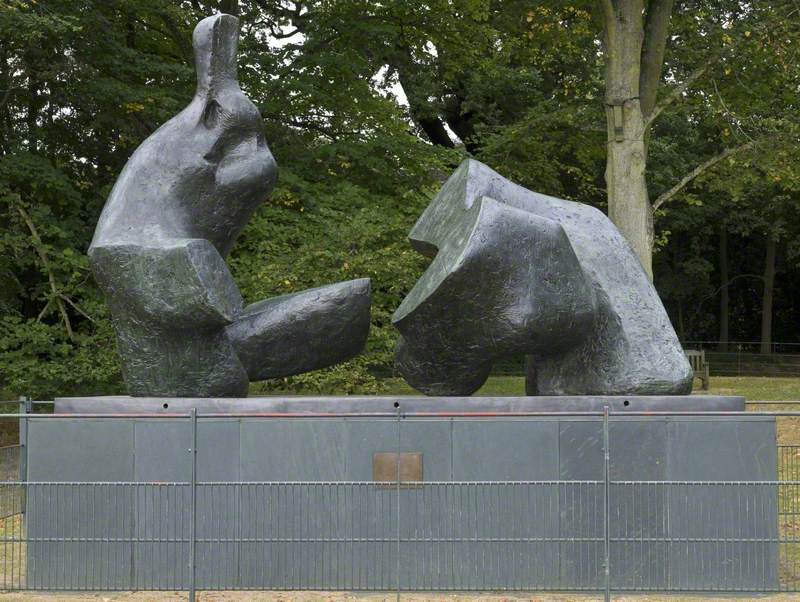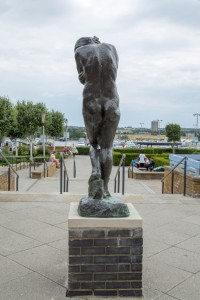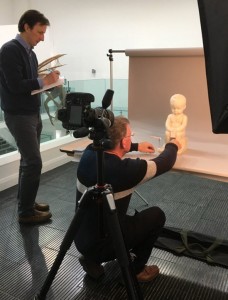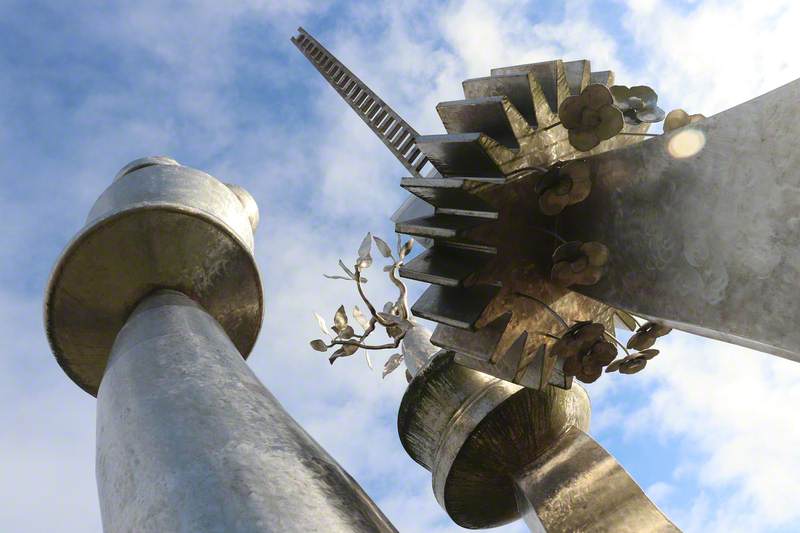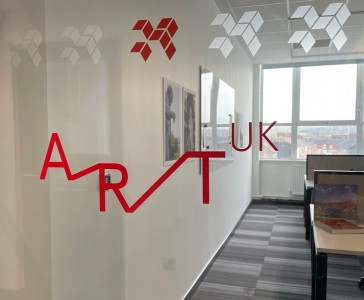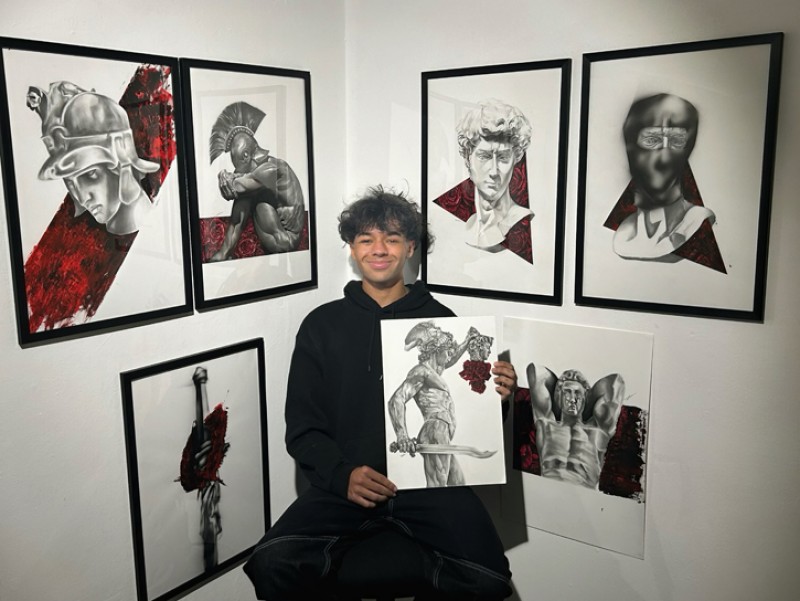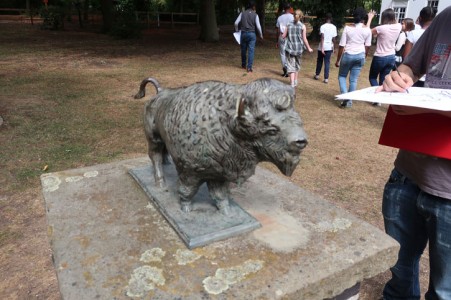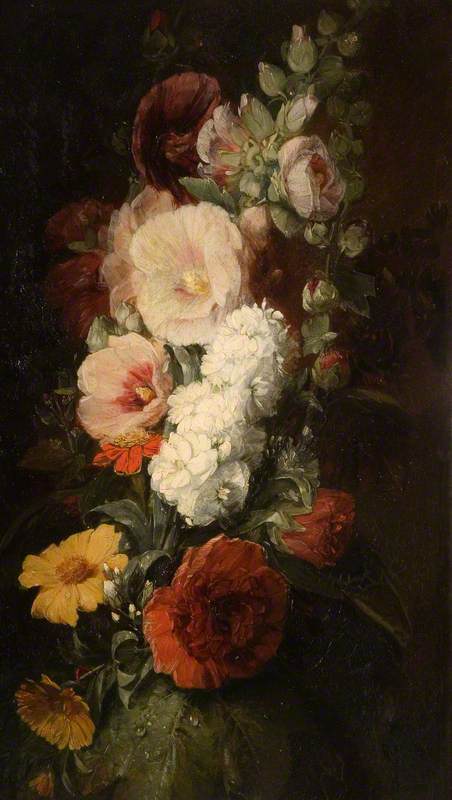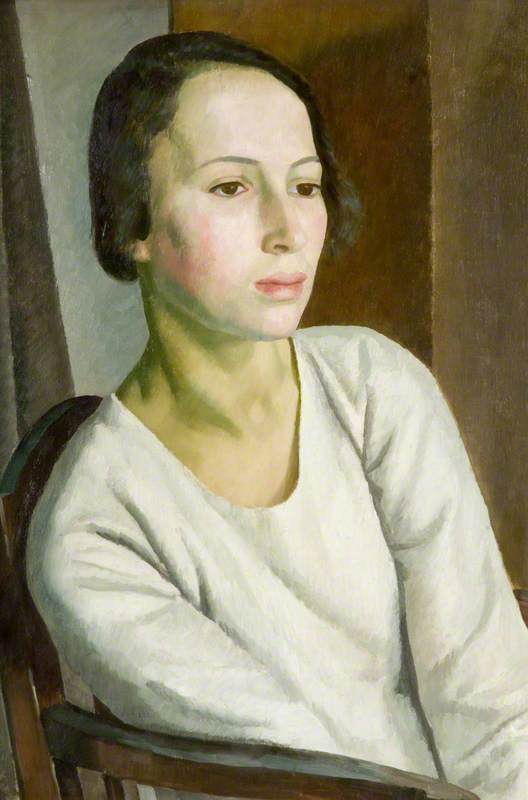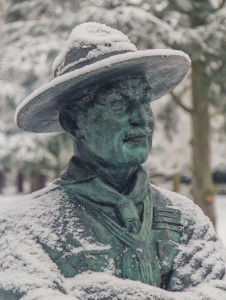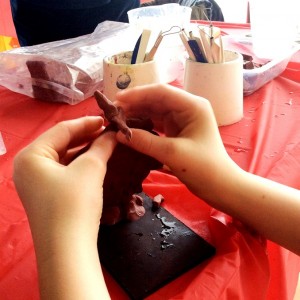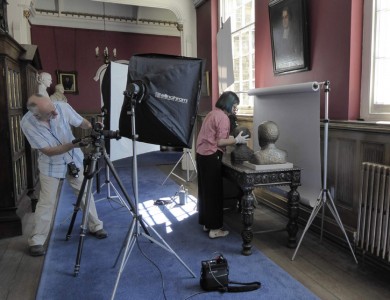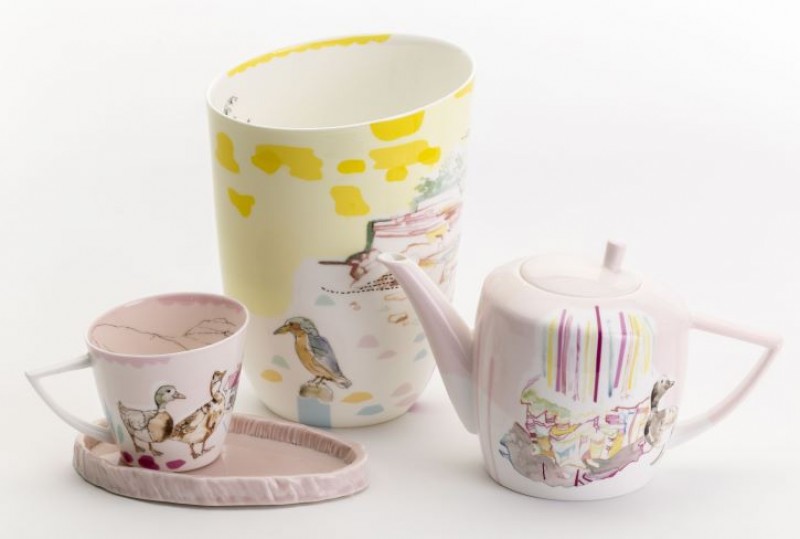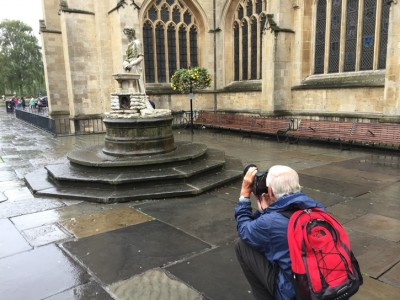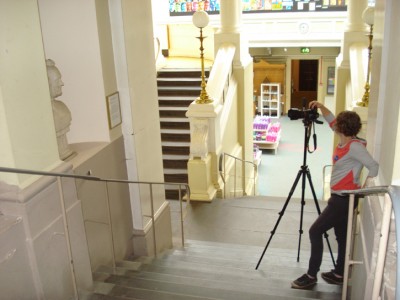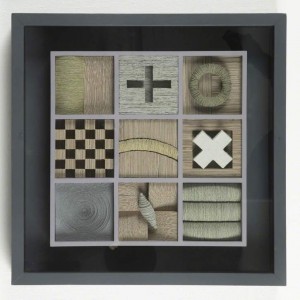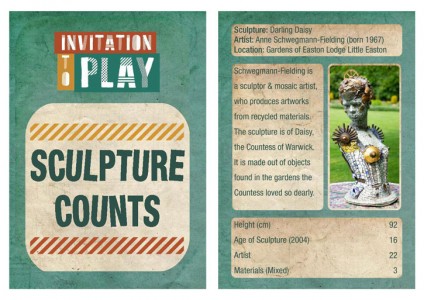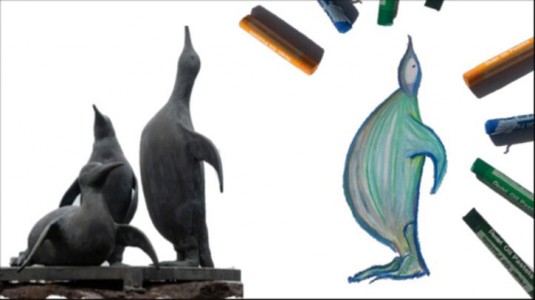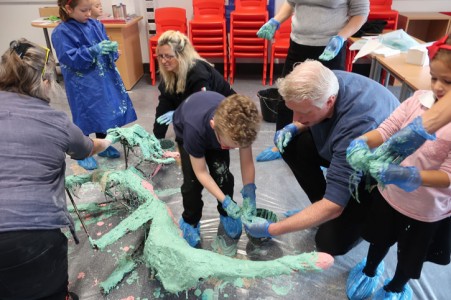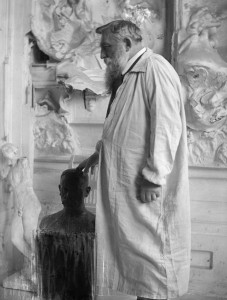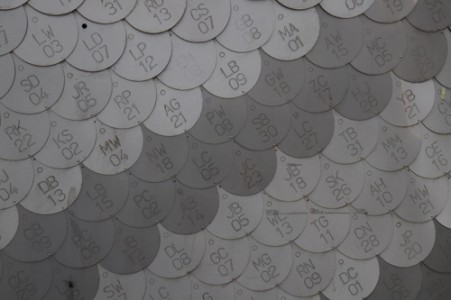'What do you think of sculpture?'
This was the first question I asked the members of Stoke-on-Trent Young Archaeologists' Club. They all started writing their thoughts on large pieces of paper and quickly came up with some wide-ranging answers. 'It can be tricky to see what the artist wants you to see' and 'It can have several meanings' wrote one. Others thought about sculpture in terms of the distant past, writing about Greek statues in temples to honour the gods and Egyptian models of cats.
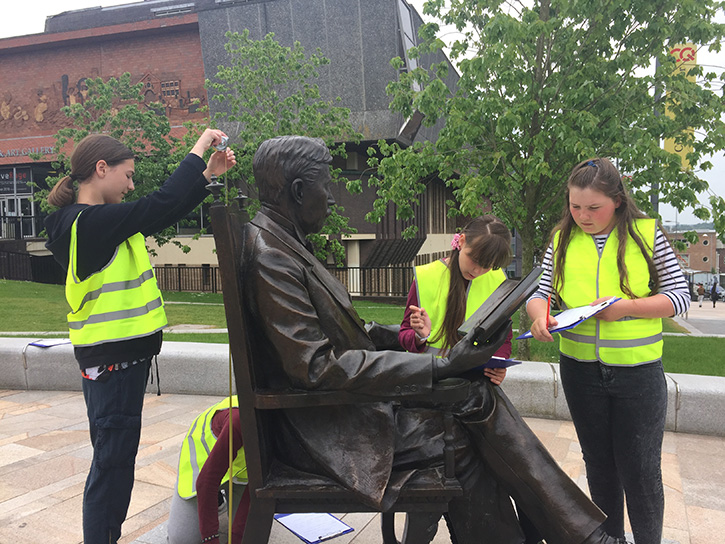
Image credit: Art UK
Recording the statue of Arnold Bennett (1867–1931) outside The Potteries Museum & Art Gallery, Stoke-on-Trent
This was the start of two sculpture activity sessions with the Young Archaeologists' Club, which meets once a month at The Potteries Museum & Art Gallery. These were run as part of the learning programme for the Art UK Sculpture project, under a group of activities called Sculpture Around You. The participants are a lively, bright group, aged from 8 to 13 years, and they were keen to talk about what they knew and to learn more.
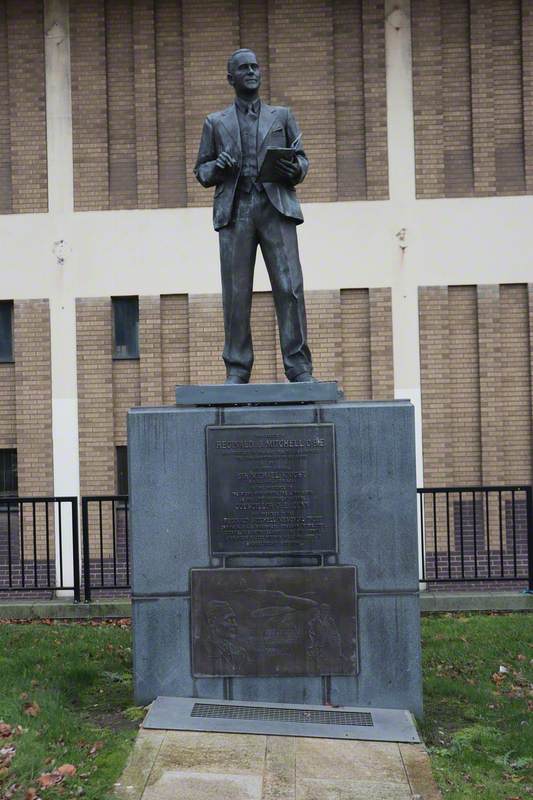
© the copyright holder. Image credit: Ian Banks / Art UK
Reginald Mitchell (1895–1937) 1995
Colin Melbourne (1928–2009)
Broad Street, Hanley, Stoke-on-Trent, StaffordshireThe focus of the first session was looking at sculpture in the museum and then using recording techniques to catalogue public sculpture outside the building. There are a few public sculptures close to the museum, so we didn't have to walk far to find some.
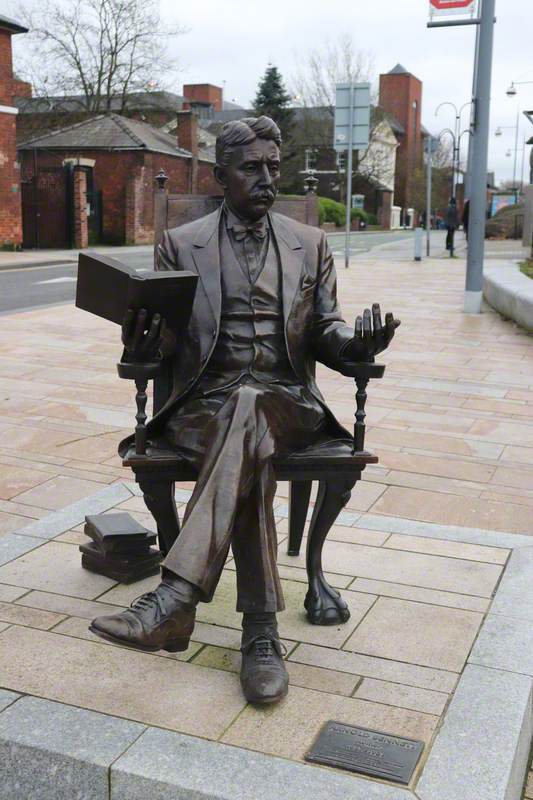
© the copyright holders. Image credit: Ian Banks / Art UK
Arnold Bennett (1867–1931) 2017
Michael Talbot (b.1959) and Carl Payne (b.1969) and Horticon Ltd (founded 1990)
Bethesda Street, Hanley, Stoke-on-Trent, StaffordshireThese include statues commemorating local heroes Reginald Mitchell (1895–1937), designer of the Spitfire, and writer Arnold Bennett (1867–1931). Another statue commemorates the workers of the local steel industry. There is also a large brick relief called 'Industries of the Potteries' on the front of the museum building.

© the copyright holders. Image credit: Julian Tubbs / Art UK
Industries of The Potteries 1981
G. H. Downing (active 1980/1981) and Frank Maurier (active 1980/1981)
Bethesda Street, Hanley, Stoke-on-Trent, StaffordshireArmed with clipboards and recording sheets, each young archaeologist was shown how to look closely at a sculpture and note down its characteristics – its dimensions and materials, as well as its setting and condition. This was a simplified version of the recording our staff and volunteers are undertaking as part of the sculpture digitisation project. In line with the aims of the club, this gave the young people a chance to learn some new practical skills.

Image credit: Art UK
Recording the statue of Reginald Mitchell (1895–1937) outside The Potteries Museum & Art Gallery, Stoke-on-Trent
The focus of the second session was making their own sculptures to represent their interests in archaeology. They brought lots of ideas about what they would like to make and we provided the air-drying clay, paper, card and pipe cleaners (as well as aprons and table covers).

Image credit: Art UK
Getting stuck in to the air-drying clay
The young archaeologists' interest in ancient civilisations was evident again, as there were a few Egyptian ankhs and a Greek temple.

Image credit: Art UK
Model of Anubis, Egyptian god of the dead
One group member made their own version of a Lewis chessman.

Image credit: Art UK
Making a model of a Lewis chessman
Others got stuck into the card and foam board to make something more abstract and modern.

Image credit: Art UK
Using card to make an abstract sculpture
At the end of the session, we asked them again what they thought about sculpture. Their comments included: 'It can mean different things to different people' and 'It's cool and inspiring'. They were asked what they enjoyed the most about the two sculpture sessions and one member wrote: 'making the sculptures because it was really fun, but I also liked recording the sculptures, so I liked everything.' We were happy with that endorsement!
Thanks very much to Alison Nicholls, Assistant Curator (Local History), The Potteries Museum & Art Gallery, for letting us take over the Young Archaeologists' Club for these sessions.
Katey Goodwin, Art UK Deputy Director and Head of Digitisation and Public Engagement
